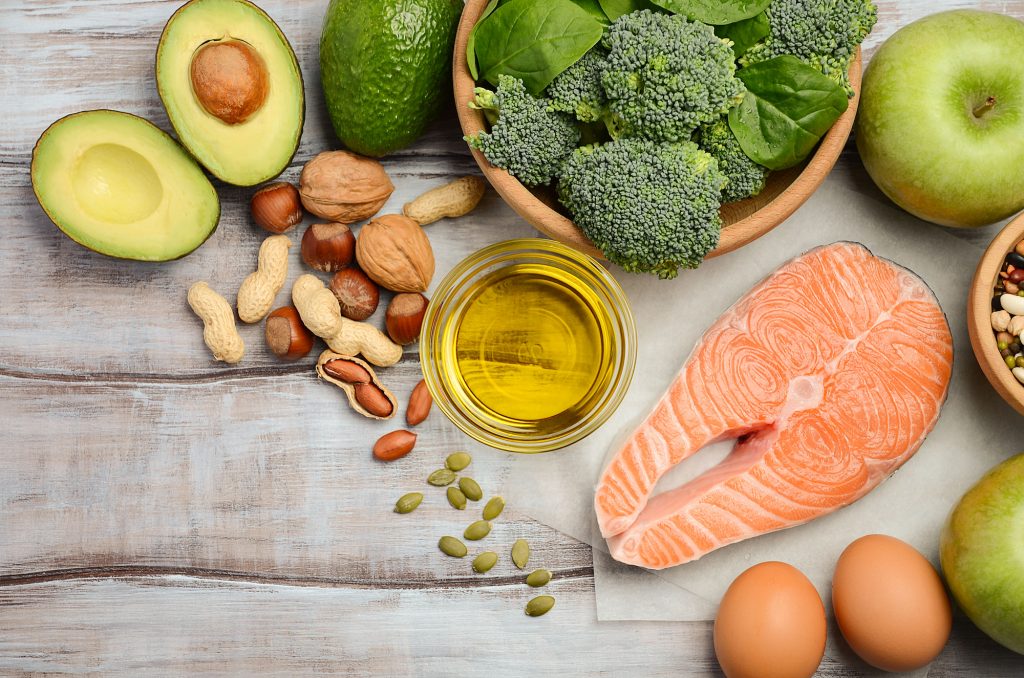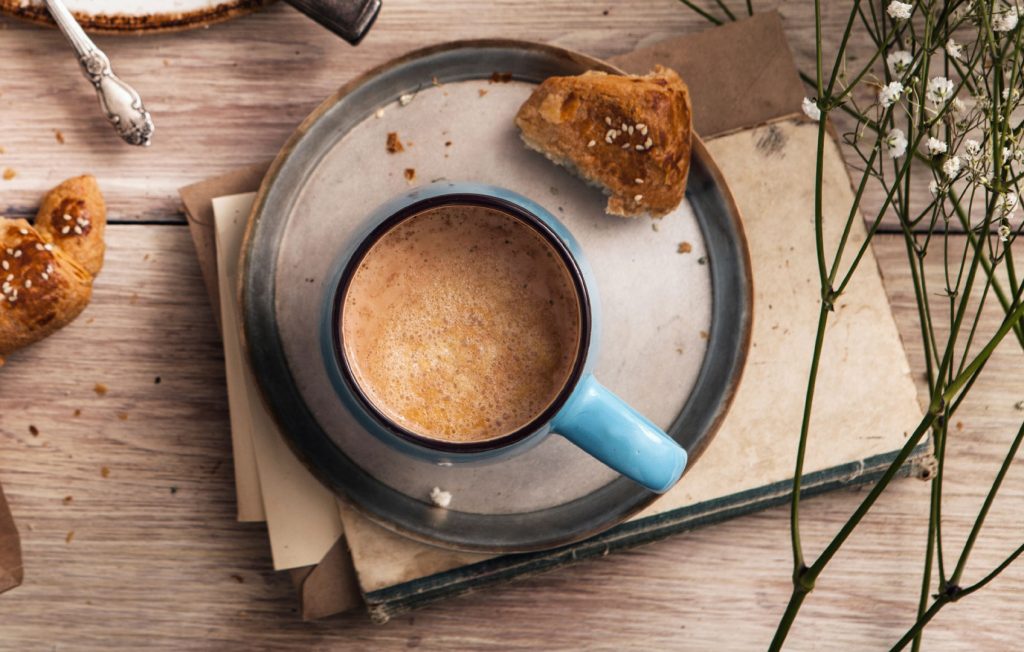5 skin hacks I wish I’d known 14 years ago

14 years ago, I thought my diet was healthy.
I was convinced that free-flowing green juices were helping to ‘cleanse’ and ‘rejuvenate’ my sensitive and unpredictable combination skin, until I found out I was anaemic and completely deficient in omega-3.
The truth is, one-off detox cleanses rarely help your skin, and cutting out ‘bad foods’ is unlikely to make a difference either.
If your skin is inflamed or breaking out, causes can be obscure; from nutrient deficiencies to hormone imbalances.
Your skin is also quite low down on your body’s priority list, so for clear skin, your body really needs to be flooded with antioxidants, healthy fats and much more.
Here are my top 5 SKIN HACKS for glowing skin, from experience as a nutritionist over the last decade or so.
1. Detox every day, not once a year
Detox drinks, juice cleanses and anything marketed with the name ‘detox’ claim to leave your skin glowing, but in reality, they rarely speed up the detoxification process.
Let’s get this straight; your body is always detoxifying.
A detox tea isn’t going to cut it, as for detoxification to take place, toxic substances need to be physically removed from your body.
Let’s look at how the body works to flush out toxins; the liver and kidneys start off by filtering the majority of toxins, and then by-products are mostly excreted via the digestive system.
Rather than following a restrictive detox diet one week each year, it’s far more beneficial for your skin to make sure your body’s natural detoxification process is in tip-top condition all year round. Here’s how…
Go natural
Give your liver a break by simply reducing your intake of toxins.
Eat organic food to reduce pesticide intake, use natural cleaning products, and avoid exercising by busy roads.
Also, perhaps an obvious one, drink less mojitos! Well… just aim to limit alcoholic drinks to 4 a week.
Get colour on your plate
Flooding your body with colourful antioxidants in berries and green vegetables also helps to support the liver and kidneys.
Get enough protein too, as although this is often lacking in juice detox diets, it is crucial for creating enzymes used in detoxification pathways in the liver.
Fill up on fibre
Excreting toxins through the digestive system is the final step in detoxification (again, lacking in many detox diets!) where soluble forms of fibre such as oats, beans, seeds and fruit play a part to help carry toxins out of the body.
Don’t forget to drink plenty of water to bind to this fibre too!
2. BALANCE omegas in your skin cells
If your skin is oily, you may be tempted to reduce fats in your diet, but it’s more important to get the balance right between the different types of fats.
Both omega-3 and omega-6 make up the structure of skin cell membranes, keeping the skin barrier tight and skin moisturised. If the balance is out though, skin can become dry and inflamed, but also prone to acne if the skin barrier is not so healthy.
More is not better when it comes to omega fats and skin health, as although omega-3 is anti-inflammatory, omega-6 in excess is very inflammatory!

An ideal ratio of omega-6 to omega-3 is around 3:1 but our modern-day diets rich in omega-6 grains and meat often brings this up to a ratio of 10:1 or even as high as 20:1 in people with inflammatory skin conditions.
Get your anti-inflammatory omega-3 fats from oily fish such as salmon, mackerel and sardines. Also try flaxseeds sprinkled on your breakfast and chia seed pudding.
While omega-9 (olives and avocadoes) has little effect on inflammation, it’s useful for protecting the skin against sun damage.
Supplements can help too, but don’t rely on ‘omega 3, 6 & 9’ as if you get enough omega-6 and 9 in your diet, it’s best to simply take an omega-3 fish or algae supplement.
3. Choose your dairy wisely
Drinking milk created for a baby calf may seem strange, but we’ve evolved to tolerate it pretty well. As a result, dairy is fine for most people, but there are exceptions you should be aware of.
You might want to cut the skinny latte as skimmed milk appears to have the most issues when it comes to skin, whereas cream, butter and cheese often have the least impact.

As milk has a higher lactose content (the natural sugar) compared to cheese, if you are lactose intolerant, drinking milk may exacerbate your skin issues. Also, as we age, we become less efficient at breaking down lactose.
A dairy intolerance (different to lactose intolerance) is also a possibility, i.e. your immune system may be reacting to the protein in dairy, including both milk and cheese.
Allergies are rarer, but cow’s milk allergy is most common in individuals with eczema, so it’s worth getting a blood test if this is relevant for you.
In acne prone skin, it is the growth hormones in milk, and insulin hormone production which can play a part in increasing inflammation.
It seems that milk loses the battle when it comes to dairy and skin, so if you are considering cutting out dairy, perhaps just start with avoiding milk as a trial.
4. Don’t cut out the wrong foods
Labelling foods as ‘bad’ and avoiding them like the plague feels right… until your gluten free, dairy free, nightshade free and low carb lifestyle limits you to a dry green salad and tofu for lunch. It’s not appetising, it’s impossible to maintain, and most importantly it’s not healthy.
There’s even a name for this; orthorexia, a way of eating that includes obsessive behaviour in pursuit of a perfectly healthy diet. In fact, cutting out entire food groups and obsessing over bad foods is more likely to lead to nutrient deficiencies, leaving you with low energy and dull skin prone to bruising and slow healing.
The takeaway message is to overlook the chocolate bar you had with lunch and focus on the healthy pumpkin seeds you added to your nutritious breakfast.
If you choose to cut out foods due to ethical or religious reasons though, make sure you know which nutrients to focus on. For guidance, my 14-day meal plan will help to ensure you get all the skin loving nutrients you need, whether eating a standard, pescatarian or vegetarian diet.
5. Test for allergies & identify deficiencies
I can’t believe how many clients I’ve seen with severe skin issues who’ve never had an allergy test. Many individuals who have been avoiding eggs their entire lives, find out after testing that they do not in fact have an egg allergy, and often something else unexpected comes up, such as coconut or dust allergy.
It can be quite frustrating to have avoided foods unnecessarily for so long, but it’s a life changer for your skin if you can identify an allergy you were unaware of. Don’t ever assume you have an allergy until tested.
If you have inflamed skin, or if it takes a long time for your skin to heal, consider a nutrient status test.
You may be able to get some vitamins and minerals checked via your GP such as B vitamins and iron, especially if you don’t eat meat, but otherwise, finger prick test kits in the post are available for the easy option.


